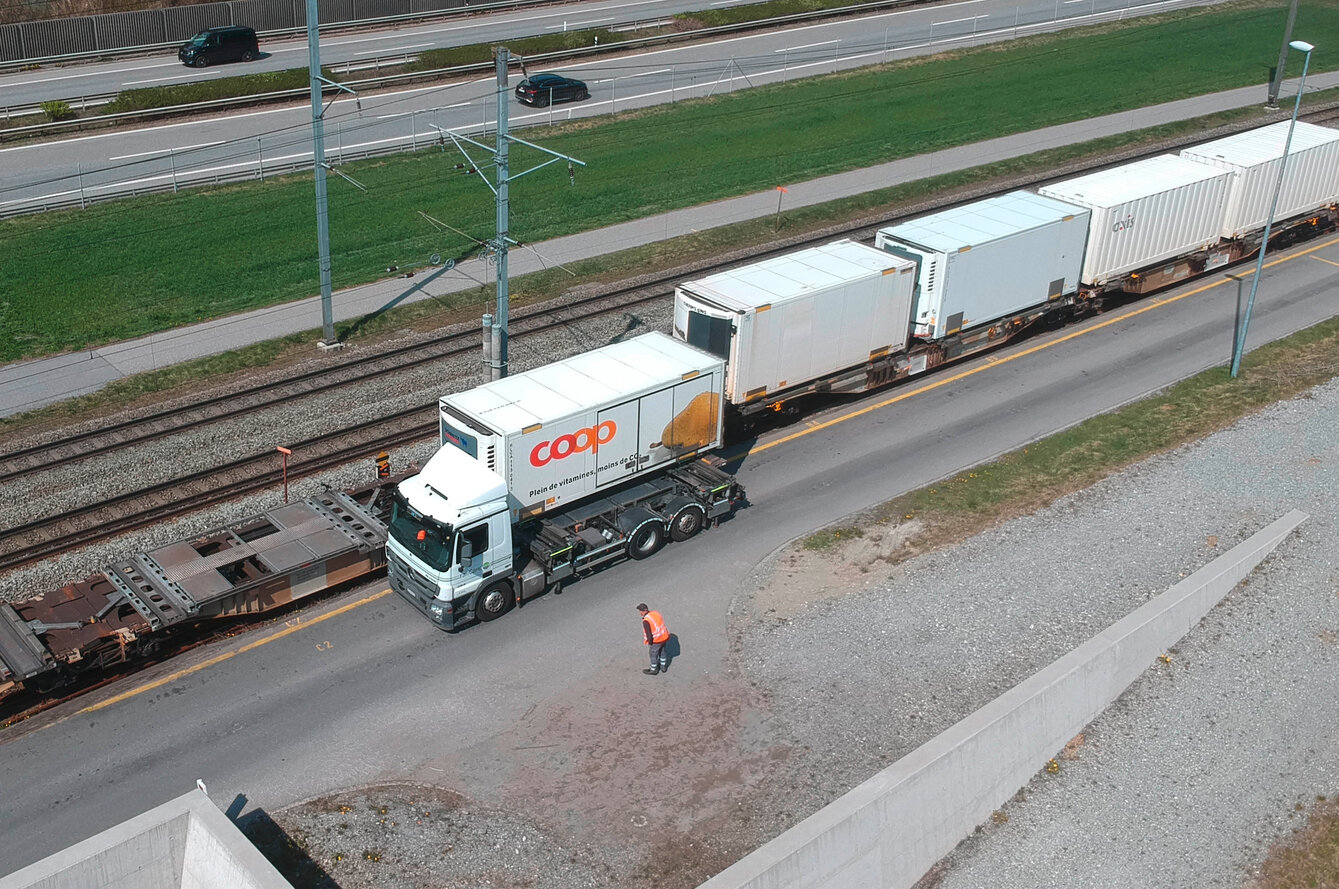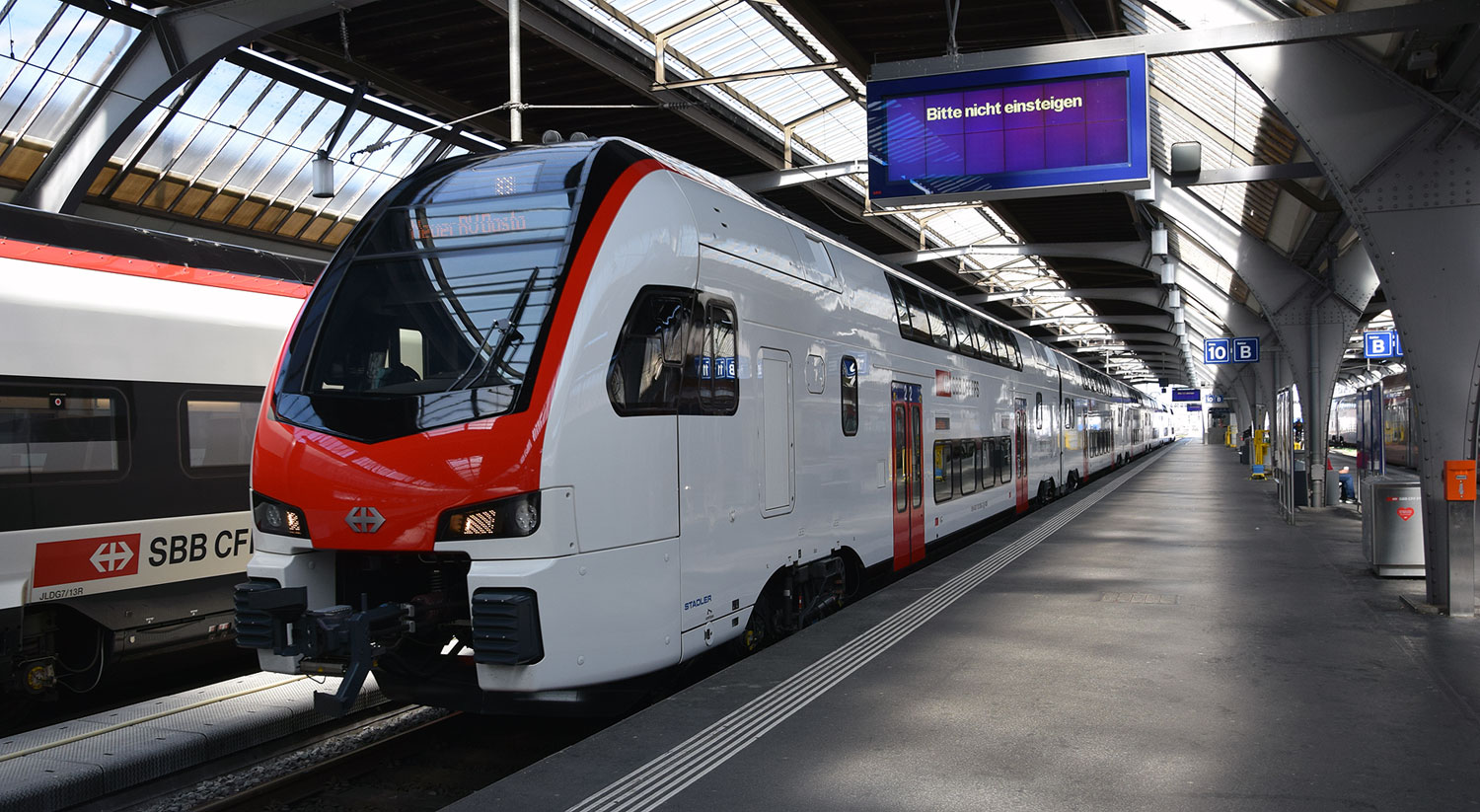|
So with these huge australian road trains, at what point does it become cheaper/safer to just run some track along your route and use regular trains ?
|
|
|
|

|
| # ¿ Apr 28, 2024 10:45 |
|
Bombardier has also had tremendous trouble with the Twindexx contract for the Swiss Federal Railways (SBB). They were supposed to deliver them starting in 2013. Deliveries started instead in 2018. The few units in service have been plagued by poor reliability, insufficient access for handicapped people, software crashes (sometimes preventing the train from running at all), a tilting system that shakes passengers around, and more. They've only recently ironed out enough bugs that the trains can run without Bombardier support staff aboard to fix things. As a compensation, Bombardier has had to deliver a handful of units to the SBB free of charge.
|
|
|
|
Yesterday, the Rhätishe Bahnen in easter Switzerland ran a world record length narrow-gauge train. It made for some pretty neat footage : https://www.youtube.com/watch?v=p_rM3GcYp4U In regular service, they run 1-2 ABe 4/16 EMU consists, but for the purpose of this record attempt they hooked up 25 EMUs (or a little under half their entire stock). In other news, I'll be starting work next year for SBB Cargo. It's been a long time dream of mine to work in the railway world. So once I get settled in, expect more bad posts here 
|
|
|
|
So I've started working for SBB Cargo. Tons of new things to learn, many new people to meet, new tools to discover. It's a whirlwind, but it's a lot of fun. Please feel free to ask questions about railroading in Switzerland in general, and freight transport in particular. I'll answer to the best of my abilities. I can't dive into the details of most activities, since I have a managerial position and am therefore somewhat removed from the actual railroading work. In the meantime, here's a picture of one of our brand new bi-mode heavy shunters (type designation Aem 940) : 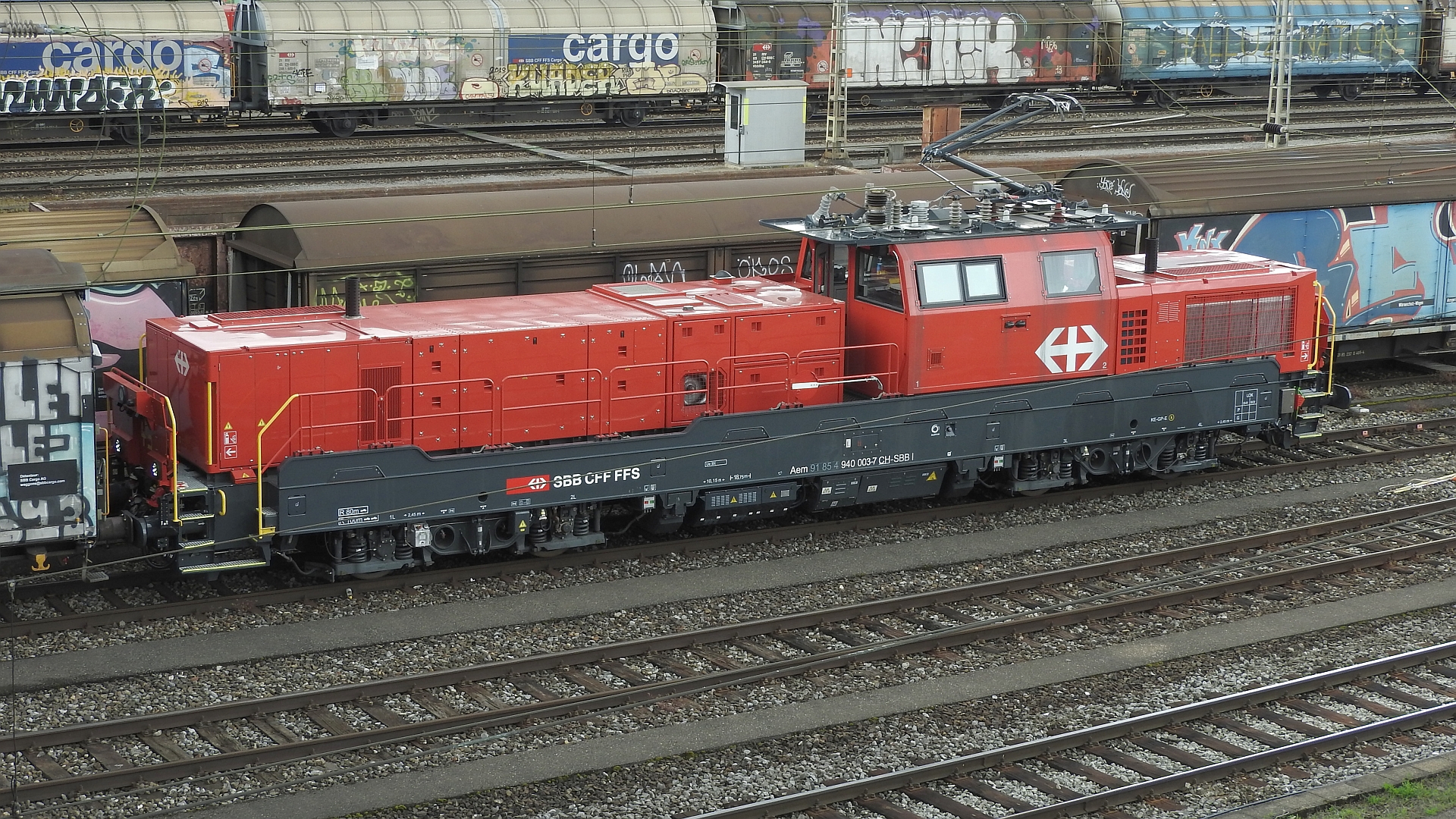
|
|
|
|
JohnCompany posted:Hey, congrats! I've only ever been exposed to the passenger side of SBB but they seem extremely competent. Thank you ! Concerning competence, one of our primary objectives is punctuality. That is to say, that over 92% of freight loads must arrive within a 30 minute delivery window at the customer's site. I will indeed be given the opportunity for a few cab rides, which I'm greatly looking forward to. Freight routes are quite varied. There are short routes from small customers to the shunting yards (and the reverse of course) : edit : in this case, it's a large customer, but the principle is the same. https://www.youtube.com/watch?v=GfRTsxdbKRQ There are routes from shunting yard to shunting yard : https://www.youtube.com/watch?v=pwj-8qhmy7o And finally there are the real money makers, the routes from the German border to the Italian border. Either through the Gotthard base tunnel, or the Lötschberg base tunnel. https://www.youtube.com/watch?v=Se6ESNEuho4 https://www.youtube.com/watch?v=7CRKUJxFNDw The scenic routes through the old tunnels are still in use, but their steep grades make them less efficient. As an example, this video is of a solo locomotive going over the old Lötschberg route. Since it's not hauling any wagons, the dispatchers didn't use their precious base tunnel train paths on it : https://www.youtube.com/watch?v=9BwsDJpRQrs Noosphere fucked around with this message at 09:56 on Feb 11, 2023 |
|
|
|
distortion park posted:How often do you clean the graffiti off freight cars? Hardly ever. It's a sysephean task and is only cleaned if it impacts safety or operational capability. On this picture, you can see that the areas of the wagon that bear important text or pictograms are clean, and the rest is left to the graffiti artists.  https://www.flickr.com/photos/40826712@N00/albums/72157629631973358 quote:Does DB's abysmal passenger rail on time numbers reflect any underlying issues that also impact you? No major impact on the cargo division, but the passenger division decided this autumn to stop most german trains at the border because they are consistently late. This way, their lateness won't have knock-on effects on the rest of the network. quote:How many derailment's does SBB freight have a year? Are there any cool photos of tons of food grade wax pouring over an alpine meadow? There's derailment, and then there's derailment. What happens sadly too frequently is a missed signal during shunting, which leads to either a derailer or a catch point to derail the train, sometimes with spectacular results. Or a switch may be run through, which will lead to trouble during subsequent shunting operations.   Here are the 2 most notable derailments in Switzerland in the past 30 years : Lausanne in 1994 : 13 wagons, among them some full of epichlorohydrin derailed, leading to a chemical spill, but fortunately no fatalities.  Daillens in 2015 : 25 tons of sulfuric acid were spilled.  There have been many other accidents (over 10'000 trains run every single day), but those are the two that stand out by far in their severity. Noosphere fucked around with this message at 21:39 on Feb 20, 2023 |
|
|
|
distortion park posted:Thank you, really interesting! You're welcome ! Today I got certified to move about on foot unaccompanied in the rail right-of-way A couple more videos. The first is a somewhat dry overview of what the SBB firefighting and rescue trains can do. https://www.youtube.com/watch?v=DtOvAcnECtg The second is a look at what a local freight run looks like from the shunting yard to the customer. https://www.youtube.com/watch?v=HHmFMCwnsm8 Noosphere fucked around with this message at 21:52 on Feb 28, 2023 |
|
|
|
What's the inspection interval for freight wagons in the US ?
|
|
|
|
https://www.youtube.com/watch?v=OYUIaebzNLs A cool documentary of a german locomotive engineer who tracked down, bought and fully refurbished the only DB class 169, and now drives it for various jobs as an independant worker.
|
|
|
|
MRC48B posted:Can you just... buy a locomotive and drive it on rails you don't own in Germany? The EU has spent the last couple of decades liberalizing the railway system. One consequence of which, is that if you can obtain a security certificate from your countries department of transportation (the renewal process for which SBB Cargo is currently going through, and it's a mammoth task), obtain a locomotive driver's license, and get your hands on a locomotive, then congratulations! If someone is willing to give you work, you've just started your own railway company. There are no minimum size requirements, but the administrative overhead and safety and maintenance requirements require a ton of work. Your question regarding "rails you don't own" : as part of this liberalization, few railway companies own their rails currently. Instead, each individual train running on the rails pays for its train path to the infrastructure owner. See https://www.bav.admin.ch/bav/en/home/modes-of-transport/railways/informations-for-professionals/train-path-price.html for more details. Train paths are bought mostly on a mid- to long-term contractual basis, according to the yearly passenger timetable for example. But some paths are kept free for unexpected traffic such as delayed trains, firefighting trains, or in this case moving a locomotive around so it can pull pre-planned trains.
|
|
|
|
Sash! posted:Long distance trains have Discharge or Receive flags to prevent seats from being used by commuters or short hauls. For instance, once the northbound Silver Star or Silver Meteor reaches Fredericksburg, VA, it becomes discharge only all the way to New York. That seems rather suboptimal from the passengers perspective. What if someone wants to go from DC to NY ? Having a half empty train do that trip that allows no one to board in DC sounds silly. An obvious solution would be to not allow booking in advance, but if you buy a ticket and get on, you can try finding a seat, or travel standing.
|
|
|
|
Fair. I had expected far worse from the US train system.
|
|
|
|
Log082 posted:And that's the small live steam. Or you can make it the focal point of your family for 3 generations and sell tickets on weekends : https://www.youtube.com/watch?v=6iZ6r_75xE8
|
|
|
|
So I am now finally cab certified. Starting next week I'll finally be able to accompany my team. I'm really looking forward to it. I'll try to write a "day in the life of a freight train engineer" post shortly.
|
|
|
|
Today we had a visit by an esteemed member of SBB Historic. Ae 4/7 10976, built in 1932 and just back from a near yearlong overhaul of the main transformer. It's spending a few days in Lausanne and hauling a charter train on Thursday. On Friday it will be coupled to an ETCS level 2 capable loco for the trip back to its home depot in St Maurice. Engineer's view :  Hauled into the maintenance bay for storage overnight :   The business side of the Büchli drive : 
|
|
|
|
A day in the life of a train engineer at SBB Cargo. This wednesday I accompanied one of my engineers on a full shift from start to finish. If you want to follow along, I suggest you use this map : https://s.geo.admin.ch/9f3ffc4a1c The shift began at 14:03 sharp in Lausanne-Triage, with time for the engineer to prepare, update his iPad and documents, and get his locomotive ready, in this case an Re420. We got going early since the locomotive had already been through its daily full systems checkup with a previous engineer. We then drove to the assigned departure track, where a railyard employee hooked the locomotive to the waiting string of cars and performed the brake test. Our train was empty Hbbillnss wagons bound for the dairy factory in Estavayer-le-Lac, so light, short and fast (roughly 250 tons and 200m long, Vmax of 120 km/h). Scheduled departure time was 14:28, but we got to leave 10 minutes early. Waiting for the departure signal in Lausanne-Triage, the tail-end of the train to Brig is visible:  We made our way to Yverdon-les-Bains, where we handed off the train at 15:15 or so to an engineer from Biel who would drive the trainto its final destination and then continue on with a full dairy train to Biel. At Yverdon-les-Bains, we had a long unpaid break during which we had a coffee, chatted and waited for the regional train at 17:00, which would bring us to our next train in Chavornay at 17:09. In Chavornay,our train was waiting for us: a 20 car cement train partly bound for Lausanne-Triage. We would then continue with the front 5 cars for Genève-Praille:  The previous engineer had kindly already hooked the locomotive to the proper side of the train, so all that was left to do was a partial brake test : depressurize the brake line, walk to the rearmost car and check that the brakes there were tight. Walk back to the loco, repressurize the brake line, go back to the rearmost car and check that the brakes had loosened properly. Once all this was done, the engineer called the operations center to ask for the departure authorization. The locomotive being on the right side of the train was a substantial time saver, so we once again left early.  The engineer operating the Re620:  Quick explanation on the ZUB. The acronym stands for ZUgsBeinflussung, or train control. All signals and almost all speed limits are equipped with balises that communicate with the train. For example, should a train pass a caution signal, then the ZUB will tell the engineer to reduce his speed. If the calculated brake curve isn't followed, the ZUB will initiate an emergency brake. Another example is a speed limit : if the train travels too fast, the ZUB will initiate an emergency brake. It'll intervene in many other cases, the most serious of which is if the train runs a red. A daily task of mine is to process ZUB cases. The drive back to Lausanne-Triage was unveventful, and after only a short wait on the arrival tracks, the last 15 cars were unhooked and we made our way to Geneva. The line is extremely busy, with around 10 trains per hour per direction of mixed traffic from freight to regional to intercity trains. So we had to pull over and wait for a passenger train to overtake us. Quad-track with 2 Leman Express regional trains near Geneva:  Geneva :  Arrival in Genève-Praille :  At Genève-Praille, a railyard employee unhooked our string of cars, we shunted over to a siding and waited. Around 30 minutes after our arrival, we moved to a new string of cars bound for Lausanne-Triage, another employee hooked them to the loco and performed the brake test. Our new train was around 400m long and over 1000 tons. We waited until our scheduled departure time and left. The line from Genève-Praille to Genève-Cornavin (the main passenger station) goes up a steep tunnel, so the engineer unleashed the full 10'700hp of the Re620. It was impressive seeing the ammeter jump to 3000 amps. That's an unbelievable amount of current. We trundled through Geneva, waited once more at the overtake siding for an intercity train to go past and then made our way to Lausanne-Triage. The Geneva-side entrance is a bit awkward since it crosses over the opposite track. We arrived on time, but lost 15 minutes in the last few hundred meters, as the path to the arrival tracks is shared with the hump, and the yard was busy. We then unhooked our string from the loco and parked it. The shift ended at 22:05 instead of the planned 21:47. All in all, a pleasant, stress-free day. There are many other kinds of shifts, and sometimes things go very wrong, but Wednesday was a good day. Noosphere fucked around with this message at 11:06 on Dec 18, 2023 |
|
|
|
Tex Avery posted:That's so cool! Is it normal for the drivers to jump from one locomotive to another upon arriving at a particular point? What I typically see in the US is a crew keeping the same locomotives for an entire run, maybe moving them from one train to another at a yard. Yes, it's very normal for a train to have multiple engineers from beginning to end. It's a side effect of geographical and time constraints :
All these factors, as well as train schedules, train path availability and customer requirements are all fed into the optimization process at headquarters, then further refined by the short-term planners in the depots. As a result, the most optimal way to dispatch personnel, especially during the day when the network is extremely busy and there's a lot of waiting, is to break the trip into small pieces. Log082 posted:That was a fantastic write-up, thank you! You're welcome !
|
|
|
|
BalloonFish posted:
Great post ! I'll focus on this video for now. The processes haven't changed much in 75 years : there are simply more computers and far, far fewer people involved. Paper handling, of course, but also nearly every step of the yard work apart from (de)coupling, and inspecting the wagons for safety is automated. And there is a slow-moving project to implement totally automated Scharfenberg couplers for freight wagons. These would also allow for the automation of brake checks, as in modern passenger trains. 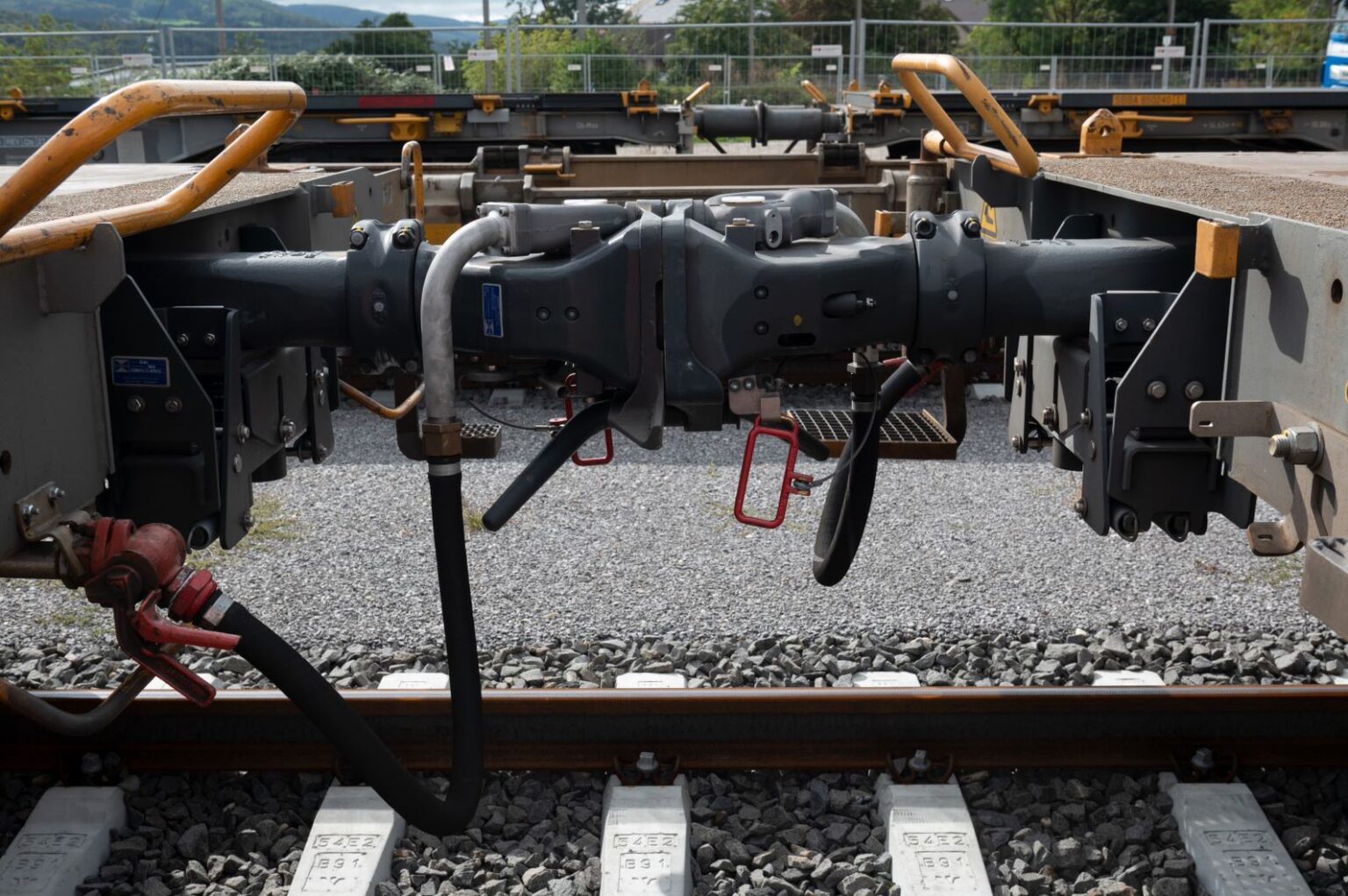
|
|
|
|
BalloonFish posted:British railcar stuff Fascinating post. I can scarcely imagine the armies of clerks and tens of thousands of pages of largely manuscript forms it took to get this sytem to work. This entire discussion about railcars has been very interesting, thank you all for your contributions. I personally can't add much, because I don't handle cars in my daily business, and have little contact with those who do. On my side, I got up nice and early for a day with another engineer. The shift began at 03:54, with a long wait for the planned ETCS level 2 capable Re 420 to arrive in Lausanne-Triage. Locomotive resources are used with maximum efficiency (or less charitably, streched to their limit), so having to wait for a loco to turn up is commonplace. At least the wait time is compensated by the fact that the full startup routine doesn't need to be done in such a case. We went to hook up a waiting string of cars and left immediately. As usual, you can follow along geographically here : https://s.geo.admin.ch/9f5162fcfc Our first stop was after only a few kilometers : we cut the last 2 cars in Renens-Triage and then set off towards our final destination in Villeneuve with 800 tons of construction site overburden. Time was tight since we only had 10 minutes to cut the cars. A particularity of the Simplon Line is that between Pully and Roche is it fully ETCS level 2, with in-cab signalling. Problably one of the slowest lines in the world to have that technology, since the Vmax for the twisty, heavily urbanised line is almost always below 100 km/h. We arrived in Villeneuve, cut the string of cars off the locomotive and then ran back to Lausanne-Triage as a single loco. ETCS level 2 cab signal locators. Basically each blue sign with an arrow on it marks the physical location of your in-cab signal:  The famous Chillon Castle:  Quad tracks and a flyover between Lausanne and Renens:  https://www.youtube.com/watch?v=iwVQozZwE7w After a break, we left for Geneva with a passenger train, but due to heavy delays, missed our initial connection, and got every further delayed (it was a really really bad day for passenger rail, with a 15 minute delay on mainline trains). So we made it late to our train in Genève-Praille and without yard staff on hand, hooked up the cars (I got to help with the brake test Elukka posted:No matter how familiar I am with it, or how many times I read the reasons why, it's always really, really weird that railroad couplers are not fully automated in the year of our lord 2023. And of course here in Europe we've got real old school buffer and chain for the most part, but all the American and Russian automatic couplers still need manual brake hose connections anyway. Agreed. One reason why it's taking so long is that no one can agree on a european standard. The SBB is waiting on the EU to move, but if nothing happens, the plans seem to be to convert all in-Switzerland traffic wagons to automatic couplers within the next several years. For now, all in-Switzerland intermodal wagons use semi-automatic couplers (Scharfenberg with manual hoses), as a sort of pilot project.
|
|
|
|
Now's the time for a recap of the past couple of weeks. I've been a bit too busy to post, so 2 trips in one post As usual, you can follow along here : https://s.geo.admin.ch/9fd6acaf73 The first engineer I accompanied had a two-parter day : an early afternoon run from Lausanne-Triage to Geneva and back was followed by something rather different. In order to increase operational robustness, mainline locomotive engineers (licence category B) are also qualified on our shunting locos. In order to keep this qualification, they need regular practice. Therefore, the mainline engineers regularly get assigned to tours that are usually staffed by junior local train engineers (licence category B100). So our locomotive for the evening was an Am843, powered by a 52l, 2000 horsepower V12. Yes, even the Swiss railways sometimes need to use diesel. Since this was a shunting operation, a member of the shunting staff came along with us, in order to form the trains and do the indirect driving.  The drivers' controls in the Am843. From left to right : direct brake lever (out of frame), automatic brake lever, power lever and reverser buttons.  You need a long hood for an engine that big. Our first task was to bring 2 wagons of gravel to a customer in Vufflens, remove 2 wagons of dirt from their premises, and finally remove some wagons of palletized goods from the warehouse/distribution center of another customer. Then all the removed wagons would be brought back to Lausanne-Triage. The way to Vufflens is quite short, at just under 10km. We then began the slow task of shunting wagons back and forth on the customer's low speed private line.  5km/h is really slow.  But once things had been sorted out, we were dumping 80 cubic meters of gravel and leaving 2 wagons to be filled during the next workday.  Then we moved on to the next customer and picked up the wagons that were waiting for us. You can see the shunting staff member (my best translation for the french agent de manoeuvre) on his way to check the wagons for readiness and safety. After getting off the branch siding, we announced our readiness for departure 10 minutes behind schedule, but since rush hour was past, the traffic control center was able to get us on our way quickly. We dropped off our train at Lausanne-Triage, then went with the locomotive to our final customer of the day in Cossonay. There we would again have a handful of full goods vans waiting for us. Quick and easy : back in, hook up the wagons, technical check and go. Overall, it was a very interesting experience, but not one that's particularly popular with the mainline engineers : they feel the shunting work is beneath them, and the resent the extremely tight schedules that shunting staff are held to. The week after that, I went along on one of our longest tours : Lausanne-Triage to Basel and back. Basel is the main entry point for cargo in Switzerland, be it by road, rail or riverine barge traffic. It's an absolutely critical hub, and multiple trains a day run between Basel and the french speaking part of Switzerland. The train left Lausanne-Triage on time, at 08:16. Our route would follow the Jura Foot Line all the way to Olten, then we'd cross the Jura mountains through the Hauenstein Base Tunnel and follow the Ergolz river to the Rhine and Rangierbahnhof Basel.  The drivers' cab allows for some seldome seen sights, like driving through this archway at the Château de Grandson. Generous reserve time is planned, as the train follows very busy lines during the morning rush. This includes two planned 20 minute overtake stops, as well as extra travel time in case we would have to run behind a regional train (average speed in that case is nearer 50km/h than the usual 100km/h most freight trains run at).  The stretch between Solothurn and Olten is the logistical heart of Switzerland. It's the site of 2 major highway interchanges and houses the largest and most important distribution centers of almost all retailers and logistics businesses. As an example here, a glimpse at the Härkingen sorting center and intermodal terminal of the Swiss Post.  It's also where the main material depot of SBB Infrastruktur is located Luck definitely was on our side. We made such good time that the first overtake stop was canceled, and we encountered no particular slowdown until Olten. In Olten, our second scheduled stop was upheld, and we waited for 20 minutes before being given the green light on towards Basel. The line between Basel and Olten is incredibly busy, as it's the main feeder to the Gotthard line for freight and also has many InterCity and regional trains (including the Basel S-Bahn) using it. We made it to Basel a massive 45 minutes ahead of schedule, and were confronted with of the special features of the Rangierbahnhof.  Instead of using shunting locomotives to hump incoming trains, the system in Basel relies entirely upon gravity. Incoming trains are held on a slope by retarders, which are then released in order to hump the train. Now, this requires a lot of precision from the engineer in order to bring his very heavy train with slow applying brakes to a precise stop on a slope, in such a way that the first wagon is properly held by the retarder. It's a tricky operation and in our case, the engineer came to a stop too early, so the retarders were lifting the locomotive by its pilot (cowcatcher). Once that problem was solved, and the locomotive parked on a siding, we had a nice long lunch break . I highly recommend the burgers at the cafeteria of the local college.  Our train firmly held in place. Around 13:45, we got our next locomotive ready, hooked to a train in the southbound departure yard and left on time at 14:22. Since the run back to Lausanne-Triage mostly avoids peak hours, a bit less reserve time is alotted. We made good speed until after Olten, and thereafter had to plod on all the way to Neuchâtel at low speed behind various regional trains.  Lakeside running after Biel.  Château de Neuchâtel. After Neuchâtel, we briefly picked up speed, before having to make our planned overtake stop in Colombier.  Full speed through the vineyards after Colombier. Once the InterCity had passed us, we resumed our route and were able to arrive on time at 17:34. All that was left to do was uncouple the train and park the locomotive.
|
|
|
|
Sash! posted:I'm going to Switzerland later this summer for 10 days (flying into Geneva, then staying in Lausanne, Zermatt, Zurich, and Murren before flying back out of Geneva). We do have a healthy number of trains on the itinerary, in part because the trip is to celebrate getting my MA in Transportation Policy, like the Glacier Express and the Jungfrau Railway. On a previous trip, we did the Bernina Express and didn't feel the need to retread that. Given that I've already seen the Landwasser Viaduct and Brusio spiral viaduct, what else should I be on the look out for as I go back and forth across the country? Congrats on that degree ! Some cool trains to take would be :
Freight trains in Switzerland have two main axes of operation :
If you want to see a freight train, the best way to do so is to hang out at the station between the passenger pulses. That's usually when the freight train paths are scheduled. On most lines, there's one freight train an hour at best, so they're easy to miss.Otherwise, if you go to the Gotthard line, for example in Arth-Goldau, you'll see platoons of freight trains at 3 minute intervals every 30 minutes. BalloonFish posted:I always feel bad when someone does a really long, comprehensive and interesting post like that and I can't find anything specific or insightful to say. But I really enjoyed reading it, so thanks Thank you for enjoying it  It's a good exercice for me to write these posts, so I'm happy if they're enjoyed as well. It's a good exercice for me to write these posts, so I'm happy if they're enjoyed as well.Gorgeous trains. English steam locos really are spectacular. Now, back to SBB Cargo railway operations. On Monday, I went along for a tour that started off fairly routine, but finished in a more interesting way. We started off at 10:03 to run a single Re620 to Geneva to pick up a string of cars to bring back to Lausanne-Triage. After a 20 minute delay because of a broken down train on the line, we drove at pace to Geneva. 140km/h really feels quite fast after running at 100km/h maximum until now. At this point, Lausanne-Geneva is starting to feel routine to me.  Our Re620 ready to leave for Lausanne-Triage after the brake check. Then, after a 1 hour reserve time and 1 hour break, we took a fairly special train from Lausanne-Triage to Geneva. Extensive track renewal is underway between the two stations, so we had an Re420 hauling three Scheuchzer track renewal machines. The first was delivered in Nyon, and the last two in Geneva.  Waiting in Nyon for the operations center to tell us which machine to unhook. Notice the Re420 in the classic dark green livery. After unhooking the last machines in Geneva, we parked the loco and took a passenger train back to Lausanne. On the way, we could get another look at the machine we delivered to Nyon:  This coming week, I'll be riding along with those engineers who work nights. It's going to be a rough schedule, but there'll be some interesting trains. I'm looking forward to it.
|
|
|
|
Sash! posted:I'm reasonably sure this is the only item you suggested that actually made it into the list. Had to keep the wife happy too. We're a bit over halfway through the trip. Right now, I'm sitting on our balcony in Mürren. Close enough to the station that I just heard the BLM pull in. That sounds like a really nice trip, definitely a great way to celebrate getting your degree. Some remarks :
So 3 weeks ago I spent all week accompanying those train engineers who have an exclusive night contract. For context, regulations stipulate that no employee should work more than 15 in 28 days between midnight and 04h00 (the so-called night hours). A exclusive night contract, on the other hand, requires that the employee only work shifts that contain night hours. It was a tiring week, since even though I’m more of an evening person, actually staying up all night is something that I’ve very rarely done. As usual, you can follow along on the map here : https://s.geo.admin.ch/a085104619 I began on monday at 20h36, with the departure to Rangierbahnhof Limmattal (RBL). A big shunting yard outside of Zurich, that serves all of eastern Switzerland. The engineer this evening commutes over from neighboring France, and greatly appreciates the reversed commute pattern ; always traveling opposite to the traffic jams. The drive to RBL went quite smoothly, with a 20 minute wait just after Solothurn to let a platoon of freight trains using both tracks pass us in the opposite direction. We arrived in RBL, and uncoupled the train and parked the locomotive for a 1h break. The cafeteria would be the nicest break room all week. Afterwards, we picked up another locomotive and shunted over to the head of the sorting tracks to pick up our train for departure. Just like Basel, RBL also has a particularity : the sorting tracks are equipped with Dowty Retarders for keeping the speed of the humped wagons stable after their passage through the main retarders. Since we were leaving towards the west, we had to pull our train out of the yard through the Dowty Retarders. It was an agonozingly slow start, with the maximum allowed speed being 5 km/h until the rear of the train had finally cleared the retarders. As I’ve said before, Switzerland has an extremely busy train network. As passenger train numbers diminish, and then almost entirely disappear between 01h00 and 04h00, heavy maintenance is done on the tracks at night. This means that delays and re-routing are routine for the nightly freight trains. On this day, we were re-routed from the direct line (Neubaustrecke / Bahn 2000 line) between Olten and Bern to the old line via Burgdorf. It’s quite sinuous, with some curves restricted to a mere 75km/h. We then ran though an utterly deserted Bern train station, with all but two tracks occupied by waiting passenger consists. It’s striking at night, just how many trains are parked in basically every single free station track or siding. The logistics of getting that many engineers to their widely dispersed trains in the early morning must be daunting. We continued towards Lake Geneva, what felt to me like plummeting down the grades as we went. Riding along at night really emphasized to me how little control the engineer has if something unpredictable happens right in front of him. In Puidoux, we gave the train over to a morning shift engineer who would drive it to Valais, while we took his locomotive back to LT. Going over the flyover between Lausanne and Renens at 120km/h was fun. We arrived slightly behind schedule, just after 05h00. https://www.youtube.com/watch?v=4NtMsQ9Ou-Q Tuesday, I went along with the nightly intermodal train. SBB Cargo runs several intermodal terminals for truck trailers. The trucking companies drop off the trailers during the day and the next morning at the start of legal trucking hours (05h00), their trailers are ready to go on the other side of Switzerland. 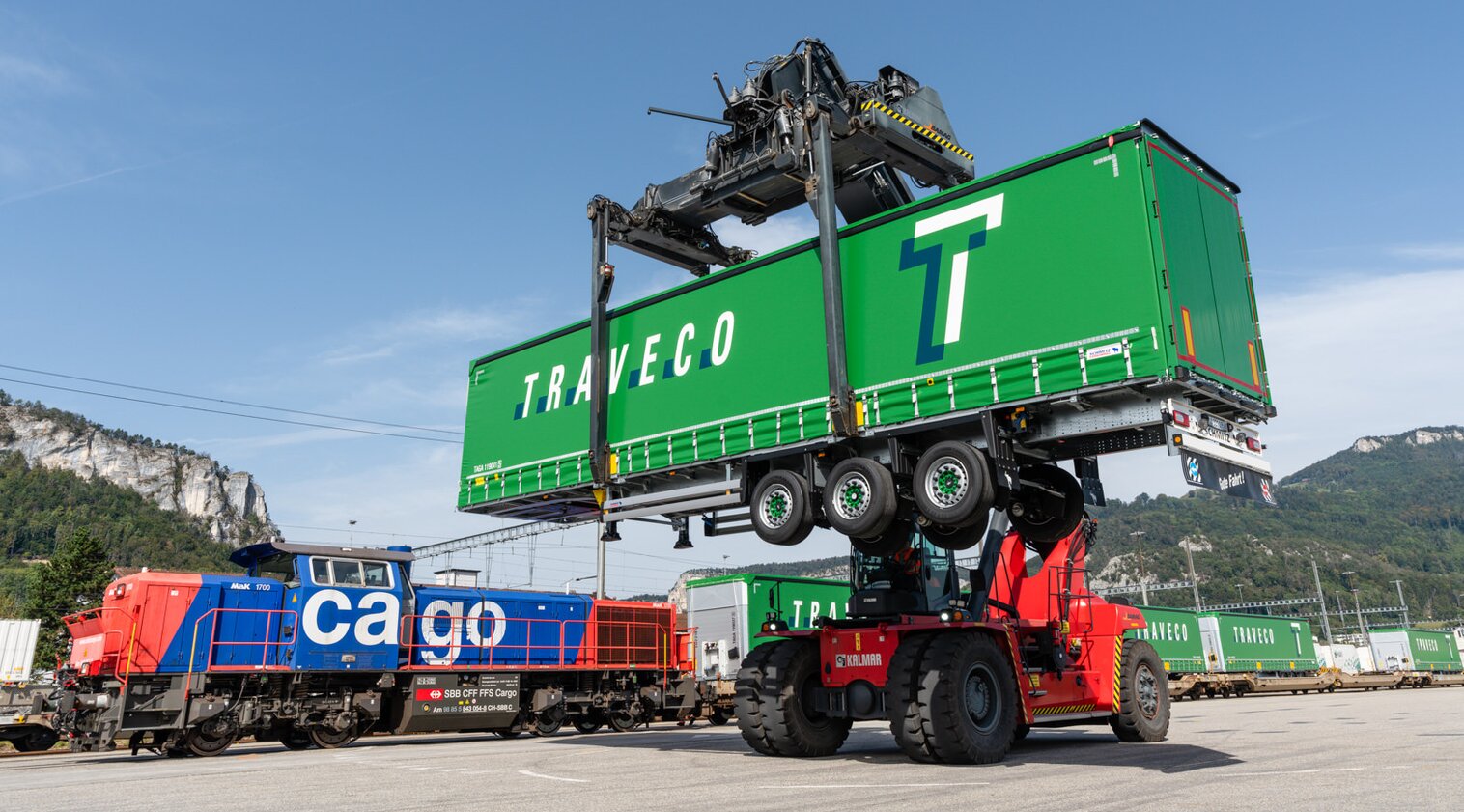 A speciality of this operation is that it is SBB Cargos’ automatic coupler pilot project. All the intermodal wagons use a Scharfenberg coupler instead of the standard buffer and chain.  Scharfenberg couplers seen from the cab. This permits extremely fast coupling and de-coupling. We began by relieving an engineer who’d come from the intermodal terminal in St-Tryphon at 20:36, then drove to the terminal in Renens to pick up that days’ cars. This required some shunting in order to retrieve the cars from the loading area, then coupling them in front of the cars we’d come with. Once that was done, we were on our way to the Dottikon Umspannanlage, or Dottikon Recoupling Installation. Back before the Gotthard base tunnel opened, trains that were too heavy to pass the summit line were split and reformed here. Nowadays, with the base tunnel allowing a single locomotive to pull 1700 tons (compared to 2 locos for 1400 tons on the summit line), the need for this installation is nearly nonexistant. So nowadays, it has been repurposed as a shunting yard for intermodal traffic.  Dottikon Umspannanlage  An intermodal train being shunted Trains from all over Switzerland converge on Dottikon, their cars shunted according to their destination terminal, and the trains then go back to where they came from with a new consist. The shunting crew in Dottikon operate on a very tight schedule, and any delay of an incoming train will make all departing trains late, which means that the truckers will have to wait for their loads. After just over an hour, our new train was ready for us, and we were on our way to Renens. Once again having to go through Burgdorf because the direct line was being worked on. We arrived in Renens at 04h05, and spent the next 45 minutes shunting the cars over to the terminal. Since it, of course, doesn’t have an overhead wire, we first needed to pick up a rake of empty cars in order to lenghten the train enough that the wagons would make it to their destination. Even with this, we were perilously close to the end of the catenary, and the engineer had to poke his head out of the window to keep an eye on the pantograph. After uncoupling our cars, we arrived and parked our locomotive in LT, slightly ahead of time around 05h15. Wednesday, we went to Basel. This was the heaviest train all week, at just under 1200 tons. But with a maximum planned weight of over 2000 tons, this train runs with a so called Re 10/10. In other words, a multiple unit with an Re 420 and an Re 620 pulling the train together. Due to amperage restrictions, multiple units cannot use their full solo power, but such a duo is capable of over 15’000hp.  Re 10/10 ready to go. As a sidenote, these locomotives can run in any combination of Re 420 and Re 620 as multiple units, up to 20 axles. But any use other than an Re 10/10 is vanishingly rare. The multiple unit had already been prepared for us by another engineer (more on that Friday). After leaving LT just before 19h, we made our way to Basel, with a stop to let an ICN and 2 regional trains overtake us near Neuchâtel, and a further stop in Olten. Once in Basel, we parked the cars in the retarder, and parked the locomotives separately, ready for their return journey to LT. We then took the regional train to Olten, arriving there shortly after midnight, where we would wait until 01h30 to relieve the engineer of a train from RBL. He arrived on time, and we were promptly on our way. Once again going though Burgdorf. This night there was a lot more trackwork between Bern and Lausanne, which slowed us down somewhat, and to the engineers great annoyance, the early morning train to Payerne, which was ahead of schedule, was prioritized over us when our paths crossed. The rest of the way was uneventful, and we arrived around 15 minutes behind schedule, around 04h45. Thursday, I got to discover the postal train service. The Swiss Post is by many measures our most important customer. They own their own high speed wagons, and all the fastest freight trains run for them. Back in the day, there was a mail compartment in every passenger train, and letters were distributed from city to city that way. Now, the Post has giant logistics and sorting centers in several key areas, and dedicated trains run between them at all hours of the day. There are two kinds of postal trains : big packages, which are shipped in intermodal containers, and mail and small packages, wich are shipped in rolltainers. We began by deviating from the prescribed schedule. Instead of taking the bus at 18h36 and using a succession of passenger trains to go to Härkingen, we instead made our way to Renens around 19h30 and hitched a ride on a locomotive that was bringing packages from Daillens to Härkingen. It was an unventful ride, and we arrived with plenty of time to spare. At 22h45, we left Härkingen with a mail train for Eclépens and Geneva. At first we made good time with our maximum speed of 120km/h. However, just after Neuchatel, the track was being completely renewed. So only a single track was usable, and then only at walking pace in the construction area. Unfortunately for us, there were 2 passenger trains and 3 other freight trains trying to squeeze past. So we waited for 30 minutes at a red signal, before finally being able to pass. Now, the Post runs a tight ship, and mail arriving and departing the distribution centers needs to be on time (their tolerance for delay is less than 10 minutes). As we pulled into the mail station nearly 30 minutes late, we could see that they had assembled extra manpower in order to unload the train faster. It was done in 15 minutes, and we were on our way again. The track to Geneva was mostly single track due to work sites all over the place, but at this time of day, traffic was low enough that we could go without stopping. In Geneva, we uncoupled our cars in the passenger yard, then coupled our locomotive to that of the package train and made our way back to LT. We were a bit late when we arrived around 03h45. Finally, on Friday I went along for the complementary service to Wednesday’s. First, the engineer prepared the Re 10/10 for the train to Basel, then we caught the Intercity to Basel in order to arrive there around the same time as the engineer who drove the freight train to Basel. We had a pleasant journey and arrived at the shunting station just as he was going to the passenger station for his train to Olten. After exchanging some pleasantries, we then waited for our prescribed departure time, before heading to the Re 10/10, and going through the full safety checklist (needs to be done once per calendar day), then going to get our consist. We departed Basel on time, but the construction work on the Jura Foot Line and the Neubaustrecke direct line caused us to be rerouted via the old Burdgdorf line. For a train from Basel to go through Bern is rare indeed. But it goes to show how much of an effort had to be made by the network dispatchers the previous evening in order to keep delays down to 30 minutes. This far longer way added a substantial amount of time to our trip. In addition, we had to wait for 15 minutes at a signal for the middle of the night regional train to cross us at yet another construction site. So despite an otherwise uneventful trip, we arrived in LT on Saturday at around 04h30, or over 45 minutes behind schedule. All in all, a very interesting experience. The night trains have far less interrupted train paths, which means that there are far fewer crew changes compared to the daytime traffic. During the day, the main difficulty for the engineers is to deal with the large number of passenger trains and all the resulting caution or stop signals. During the night, the sheer amount of trackwork can cause delays or send the train on a line that the engineer hasn’t run in months or years. Noosphere fucked around with this message at 11:16 on Dec 18, 2023 |
|
|
|
Sash! posted:During the stay in Mürren, I had more time to study what I came to realize was the most fascinating and entirely Swiss freight movements I've ever seen. The Mürren cargo module is really cool. Since the village has no road connection to the outside world (except for a forest track appropriate only for off-road vehicles), all freight for the village has to use the gondola and the train. I've not heard of other such exact load handling devices, but all passenger gondolas can and do carry freight for the destinations they serve. Your timing for the Prestige Class was good. These trainsets were taken out of service shortly after their introduction because the wheel geometry was damaging track points. As the necessary tweaks to the bogies are being made, they are being phased back into service. The Coop containers are simply standard interchangeable truck freight boxes. 2 axle light trucks in Europe have a maximum bed length of 7.5m, and these containers are meant to fit them. The other intermodal container standard in wide use in Switzerland is the ACTS container. A notable use case for them in my area is bringing trash up to the incinerator in Lausanne : instead of having dozens of trucks go through the city each day, they dug a train tunnel. The intermodel ACTS containers are picked up at several stations all over the area and then shoved up the tunnel to the incinerator. 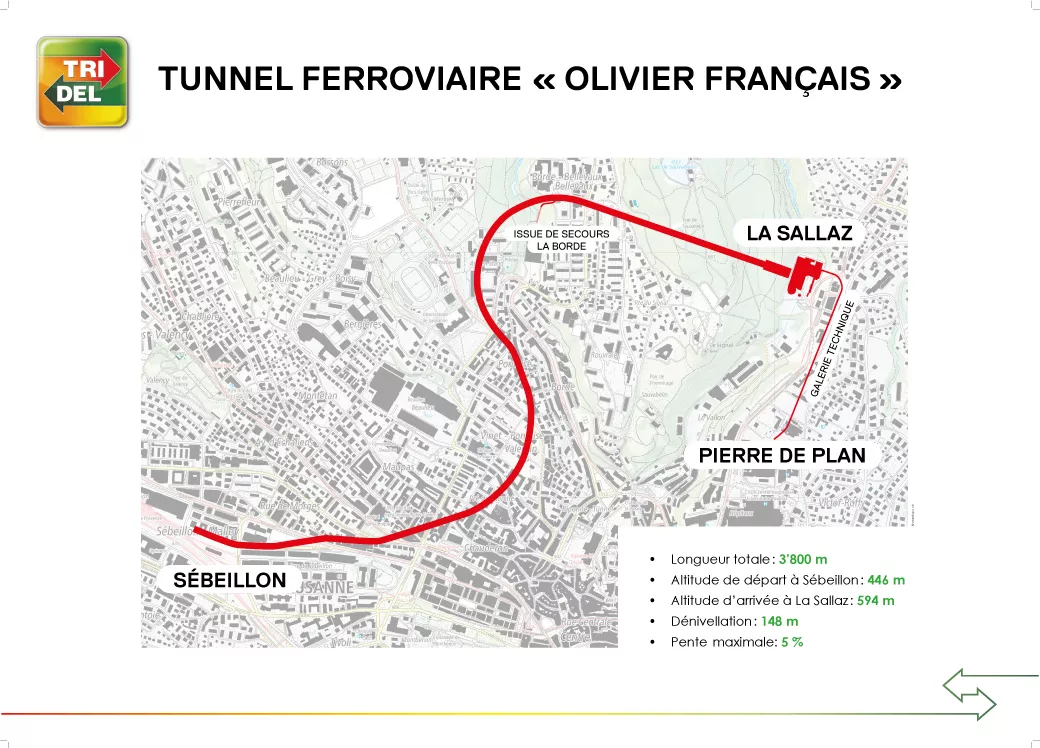  Sash! posted:
Let's talk signals ! The standard gauge network has 3 kinds of signals : L type signals, N type signals and in-cab signaling with ETCS level 2. L type home signals look like this :    With distant signals that look like this :    N type signals look like this : They can act both as home and distant signals. There are in some places dedicated distant N type signals : L and N type signals are used interchangeably. In general, if the signalling on a stretch of line has been redone in the past 15 or so years, it's going to be N type, while older signals are L type. On certain lines, signal types will switch 3 or 4 times. The amber light and beeping you heard is the acknowledger : unpon passing a distant or home signal which orders you to slow down, the acknowledger will beep 3 times and flash. If the engineer doesn't turn it clockwise, it will then initiate an emergency brake. You can hear it here, as the train passes an L type distant signal displaying  , which means that the next home signal is : , which means that the next home signal is :  and that the train should slow down and prepare to stop. Of course, by the time the train gets there, the next home signal has already opened to and that the train should slow down and prepare to stop. Of course, by the time the train gets there, the next home signal has already opened to https://www.youtube.com/watch?v=Se6ESNEuho4&t=1314s Sash! posted:
The federal Disability Discrimination Act gives public transport authorities until the end of this year to make their services accessible. So the SBB is working as hard as possible to get everything done by the deadline. You can see the accessibility ratings of the stations here : https://maps.trafimage.ch/ch.sbb.ha...89172.55&z=10.2
|
|
|
|
Sash! posted:Cool post. You really had an amazing trip. Truly a great way to celebrate your degree. So I've been reading through the back issues of the Schweizer Eisenbahn Revue that are stored in the engineer's breakroom. Plenty of interesting articles, but of particular note to your trip is the exact reason why the GPX trains were banned from running on standard gauge track. The gist of it is, that the exact geometry of standard gauge and metric wheels is different. Therefore, despite the wheels being gauged apart properly, the flanges found themselves in the wrong place and would hit and heavily damage the track switch frog. As of may, Alstom was still working on finding a compromise wheel geometry that would work on both track gauges. Sash! posted:
Allow me to be pedantic : it's an ETR 610. For the Milan-Geneva Eurocity, SBB runs part of these trains (designated RABe 503 Astoro), and Trenitalia the others. Sash! posted:
The Vectron is definitely a cool looking loco. We'll be getting our first batch next year. It'll be quite a leap in technology from the Re 420 and Re 620 that we currently use. Amusingly, the Vectron is so heavy and so prone to rail wear that SBB Cargo International has downgraded it's maximum speed to 100km/h for operations in Switzerland. Rumors abound that it might even be downclassed from Re 475 to Ae 475. The first A class locomotive since the days of the good old Ae 6/6. The chevrons are the train end signals in Switzerland. And the shunting staff in Geneva and Basel hate the big and heavy french lanterns with a passion. On to other things : according to the newspapers, last thursday, a wheel exploded on a freight car going through the Gotthard Base Tunnel (the Swiss Transportation Safety Investigation Board told the press today that they found wheel fragments several kilometres from where the train came to a stop). The end result is that 23 cars derailed at 100km/h as the train was going through the Faido multi-function station, which allows trains to switch from one tube to the next. Fortunately, no one was hurt, but the damage is spectacular, and the Gotthard tunnel will be shut for at least another week. Passenger trains and light domestic freight trains can go over the summit line, but all the heavy international freight is backed up from Genoa to Hamburg and back.   Apparently, several kilometres look like this. 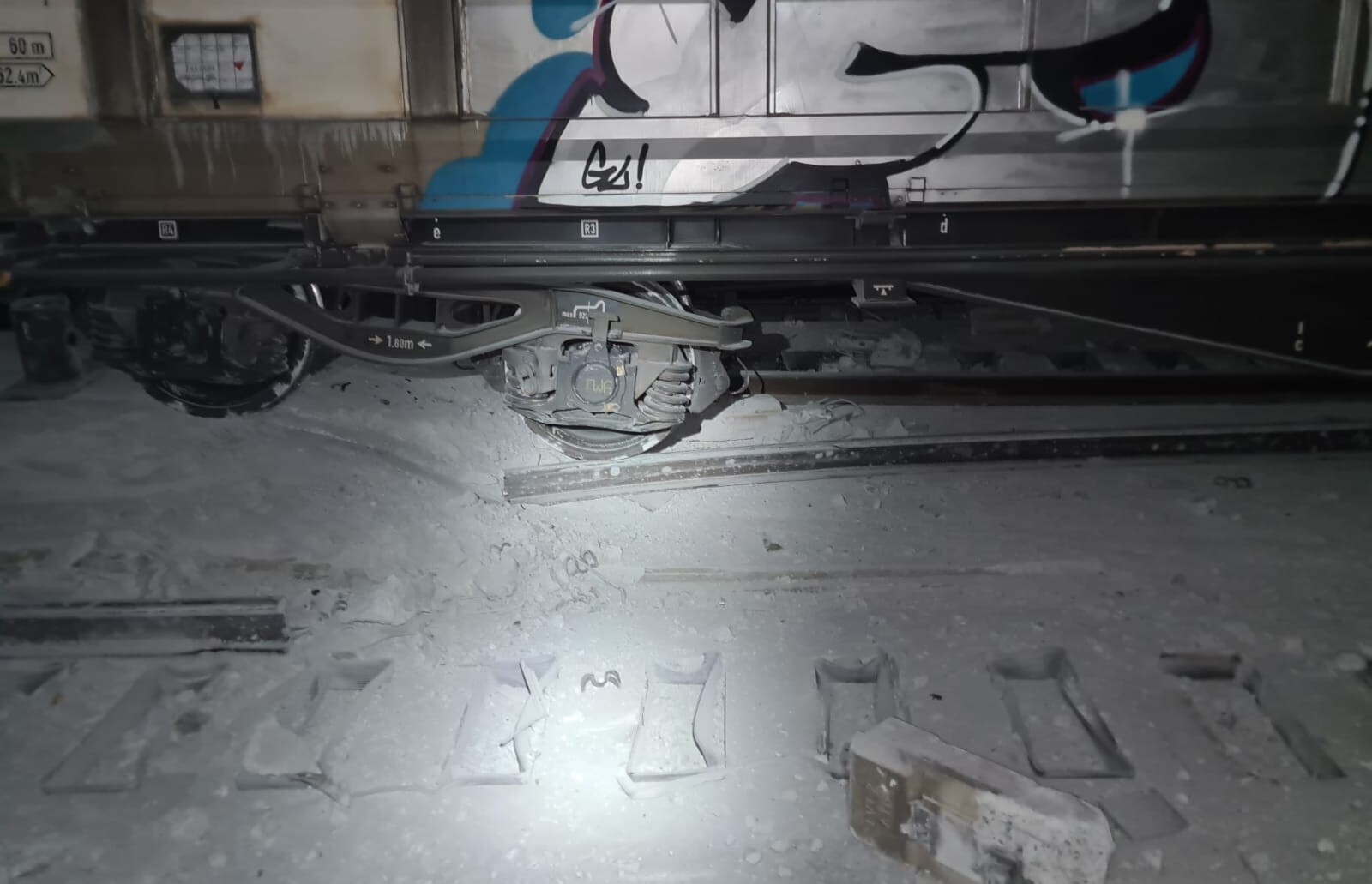  And this last picture shows why both tubes are shut down : the derailed wagon plowed through the pressure doors that separate the tubes.
|
|
|
|
Jean-Paul Shartre posted:A) I’ve been on that route a few times. First, is it just me or are the seats worse than any other SBB train? Also, can the Italian café car staff teach the Swiss how to pull an espresso, please? A) I can't really comment on that, because the one time I got onboard the Milan-Geneva Eurocity, it was a Trenitalia unit. Also, please respect Swiss-style coffee B) The Gotthard Base Tunnel has one tube that is in really bad condition. Removing the damaged and derailed cars will be a slow process, as they have to be removed through the north side of the tunnel, around 40km from the accident site (also quick correction : 16 cars derailed, not 23). Then the track will have to be rebuilt. Fortunately, the undamaged tube will be usable again starting on 23.08, at which point 90 freight trains per day will be able to use the base tunnel. All other freight trains will either use the summit line or the Simplon line. The planners over in Olten had to do a lot of overtime to completely overhaul the freight schedule. Passenger trains will continue being routed over the summit line for the forseeable future. The SBB media center released more pictures. Noosphere fucked around with this message at 20:48 on Sep 3, 2023 |
|
|
|
Saukkis posted:What would it have required to prevent or reduce the destruction? From the information I've read the train passed inspection point right before the tunnel so the wheel broke inside. Would microphones or other vibration sensors attached to the rails at regular intervals worked? Or other microphones in the tunnel. Seems that most other detection equipment could only do spot checks and might leave too big gaps. Good questions. Unfortunately, I know nothing that hasn't been published in the press, and we received strict warnings not to speculate publically. Until the Swiss Transportation Safety Investigation Board (https://www.sust.admin.ch/en/stsb-homepage) publishes its findings, no other information will be forthcoming. In other news, the SBB turned a profit for the first time since 2019
|
|
|
|
There are frequent wayside inspections for hot axles, flat spots, unbalanced loads, etc. And all freight trains are checked by a tecnical controller before their first departure of the day, as well as any time they go through a classification yard.smackfu posted:Why does the one picture just show a ton of trash in the tunnel? The pallets of what appear to be soft drinks spilled everywhere once the wagons tipped over. Log082 posted:Yeah, I thought about going into more detail on fracture detection but stopped because I don't actually know anything about how it's applied in the field, to trains or planes, just what I see in academia. They might be able to get away with ultrasonic detection of cracks without removing the wheels, but I don't know if they actually bother and that would still take an inspection anyway, it's not something that could be done track side. Ultrasonic crack detection is done when a rail vehicle is sent for periodic maintenance at the workshop.
|
|
|
|
Some cool impressions of the complete rebuild of the Bern train station between 1957 and 1974 (timestamped to some montages with music. Watch the whole thing if you're interested and speak German). https://www.youtube.com/watch?v=Abw1Ah8sYxw&t=2537s
|
|
|
|
Here's a cool documentary about a local railway company, one of the few meter-gauge railways still regularly transporting freight is Switzerland. To do so they use Rollbocks and a change-of-gauge installation in Morges. It's pretty cool. https://www.youtube.com/watch?v=BFrqYJSlDfY (in French, but subtitles are available) For a metric-gauge local railway, it's fairly busy for freight with 3 daily trains of gravel and sand from a quarry, 3 return trains of excavation material. Less frequent trains include wood, sugarbeets, and armored vehicles (the Swiss Army's artillery school is situated in Bière, at the end of the line). 
|
|
|
|
https://www.youtube.com/watch?v=ANl_MV-yZcE Watching this, it's honestly shocking how loud these commuter trains are. What is the purpose of the bell ? I can just about understand it's use in a rail yard, but here we see trains that are on their own track, yet ringing that bell. Also, it's purely esthetic, but are the hazard stripes really necessary ? In general, it seems to me that US rail regulations make trains seem more dangerous than they actually are, and therefore cause other problems, such as noise pollution. I mean, this is to me what a commuter train should sound like : https://www.youtube.com/watch?v=0F_cIM1Wb_g
|
|
|
|
Sash! posted:It is a bit tricky because the actual rule is written in such a way that it technically only applies to when people can foul the track. I know they don't ring the bell on the NEC when blasting through a station they aren't stopping at. Presumably, they're interpreting the rule to mean that people aren't able to foul the track on a high level platform. On the other hand, I've heard Amtrak crews turn on the bell going past a low level platform they're not stopping at. It is easier for someone to foul from a low level platform. So in any circumstance where someone could concievably get on the track, they need to ring the bell ? I guess that explains why the Metra trains ring their bell non stop when using unfenced tracks in residential neighborhoods. It must drive both nearby residents and the train drivers mad. Peanut President posted:edit: we should just replace metra with the el, problem solved Much better ! TheFluff posted:I like train horns as much as the next foamer but one thing that drives me nuts about US trains is how they seem to honk at every single level crossing. I was in Palo Alto on a work trip once and you would regularly hear Caltrain honking its way through the city late at night, even indoors a significant distance from the railway. No wonder Americans don't like trains. I mean, yes, level crossings are hazardous and are best avoided, but here the rule is that the train only needs to honk if the crossing has no barriers/gates (typically only a thing in very rural areas). If the crossing has gates then those do the signaling already so there's no need for a train horn. Same here. Swiss trains will only honk or whistle in an emergency or if they pass a signal ordering them to. 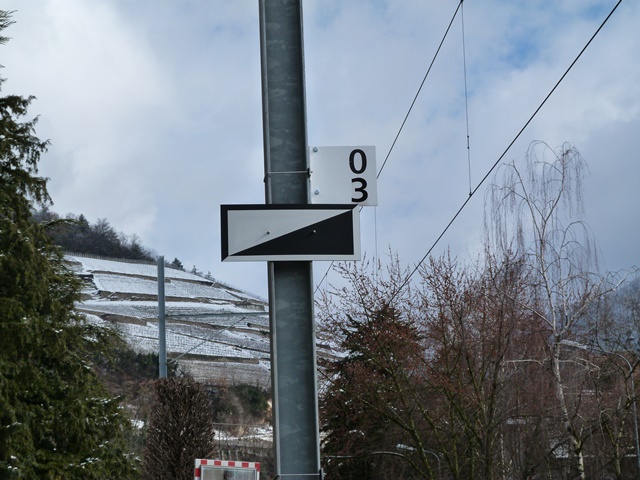 In SBB Cargo news, we're going to get our new Vectron locos starting next summer
|
|
|
|
Yeah, talking to the more experienced train drivers, it wasn't until the last 20 years or so that headlights on trains have allowed them to see much outside the cab. One of my colleagues has a story about a time someone was spotted wandering on the tracks near a tunnel. Since his lights barely allowed him to see, he had to go along at a walking pace though the tunnel, constantly expecting the person to by lying on the tracks. He said it was incredibly nerve wracking.
|
|
|
|
So the Swiss Transportation Safety Investigation Board recently published its intermediate report on the Gotthard Base Tunnel accident. It's available in german here : https://www.sust.admin.ch/inhalte/BS/2023081002_GBT_ZB_D.pdf Based on the report, the Swiss national TV station modeled the course of the crash (it should start at 03:01) : https://www.youtube.com/watch?v=2bawc_gtUpg&t=185s It's in german, but the sequence of events is pretty clear. While the broken wheel on the freight wagon caused a lot of damage, something happened to the switch at the Faido multifunction station, which broke the train in half and derailed and crashed the rear half of the train.
|
|
|
|
I just learned about the most adorable little diesel shunter. Just look at it 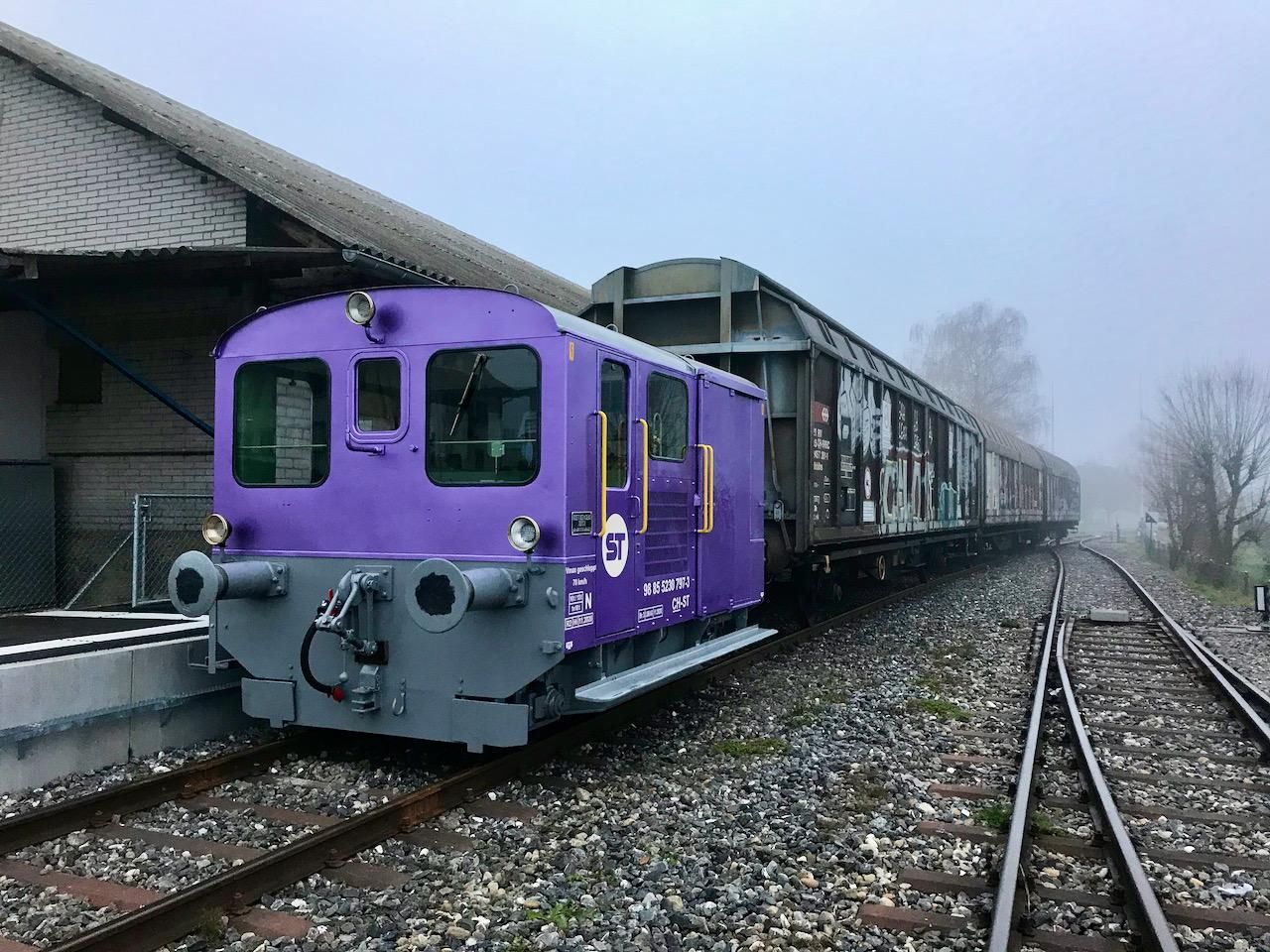 It belongs to the Sursee-Triengen Bahn. A small company that runs two near-disaffected railway branches near Luzern and Zürich. After passenger service was cancelled, they've kept the lines open for heritage trains and freight service.
|
|
|
|

|
| # ¿ Apr 28, 2024 10:45 |
|
Here's a very cool look at the Autoverlad (car shuttle) between Goppenstein and Kandersteg : https://www.youtube.com/watch?v=tfUGuozFDRg
|
|
|






